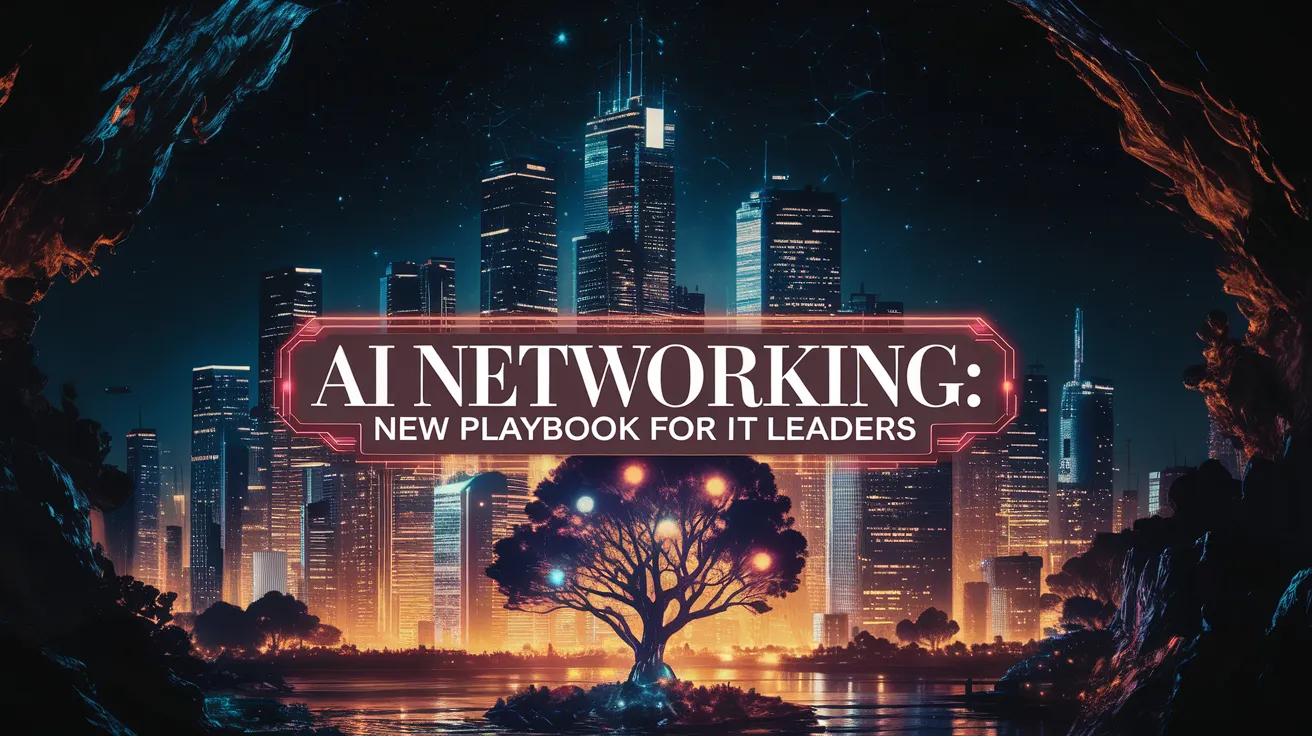AI Networking: New Playbook for IT Leaders

AI networking is fundamentally changing how enterprises design their digital infrastructure. With the rise of AI-driven tools across various sectors, organizations are reengineering their data centers and distributed networks to ensure optimal performance. However, this transformative shift has also illuminated significant challenges concerning scale and reliability in existing IT systems.
Matthew Landry, vice president of product management for Cisco Wireless at Cisco Systems Inc., has observed that evolving traffic patterns necessitate greater automation. Many organizations encounter systems not originally designed for the intense workloads associated with graphics processing units (GPUs), pushing networks to their limits. Murali Gandluru, vice president of product management for data center networking at Cisco, points out that early adopters of AI face critical pain points, especially around the scale of their infrastructure and the complexity of operations. He emphasizes that networks were not built for the demands of GPU-to-GPU communication.
This discussion took place during an exclusive broadcast at The Networking for AI Summit, where both Landry and Gandluru shared insights on the complexities of AI-driven networks and their impact on enterprise infrastructure.
The Demands of AI Networking
As AI networking expands from centralized data centers to edge environments, IT departments face the dual challenge of supporting GPU-intensive workloads while maintaining low latency for edge applications. This necessity marks a shift in perspective; it’s essential to rethink networking strategies specifically for AI workloads, rather than solely applying AI technologies to enhance traditional networking.
Landry highlights that Cisco views this evolution as a crucial distinction—focusing on networking designed for AI rather than merely leveraging AI to improve existing networking setups. He notes that as AI adoption accelerates, networks will have to adapt to handle a surge of machine users that operate with a sensitivity to latency and consume significantly more bandwidth than traditional users.
Reprioritizing Data Centers to Meet AI Demands
The implications of AI networking are no longer theoretical; they represent a fundamental change in how data centers are configured and managed. High-bandwidth requirements for training extensive AI models in centralized data locations compete with the need for ultra-low latency processing at the edge. With resource constraints being a constant challenge, IT teams are increasingly relying on automation to manage network demands effectively.
Gandluru notes that modern systems must support mixed and hybrid workloads, integrating both CPU and GPU environments. Organizations have begun deploying network strategies that prioritize GPU-to-GPU communication to maintain the efficacy of AI applications. However, this transition comes with its own set of operational difficulties. Enhanced visibility and speed are required for troubleshooting across distributed networks, while security also necessitates robust practices to preserve data center resilience.
In response, there is a pressing need for automation to streamline operations and ensure scalability. A common approach to observability becomes imperative, particularly for those implementing GPU clusters. Such strategic adaptations will be pivotal for organizations aiming to keep pace with the evolving demands of AI-driven networking.
To delve deeper into this topic, you can watch the complete video interview featuring Matthew Landry and Murali Gandluru, part of SiliconANGLE’s extensive coverage of The Networking for AI Summit.
![]()
Support for independent tech journalism is crucial, as emphasized by John Furrier, co-founder of SiliconANGLE. Engaging with the CUBE community offers tech leaders a unique opportunity to share insights and foster collaboration in this rapidly evolving landscape.
SiliconANGLE Media continues to lead in digital media innovation, emphasizing the confluence of technology and information in shaping the future of enterprises.